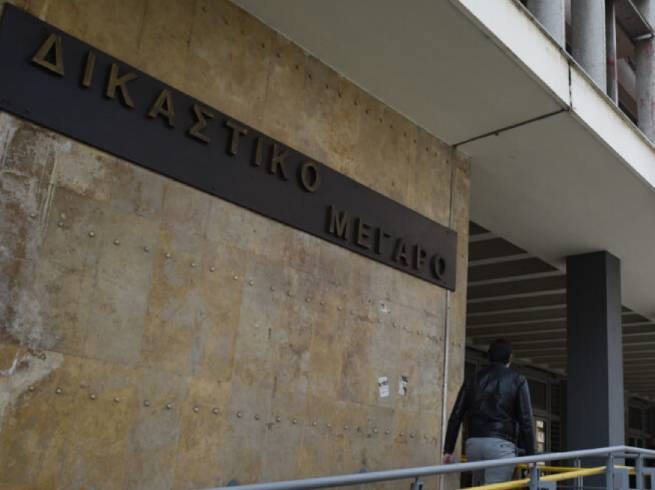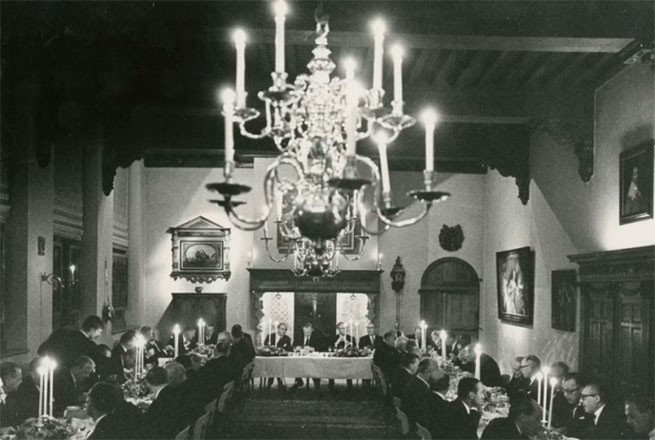In late October, more than 40 of Europe’s most influential bankers gathered at the luxurious Dolder Grand Hotel overlooking Zurich to discuss the state of their industry over three days.
Attendees were given the chance to ask questions of Swiss Finance Minister Karin Keller-Sutter and central bank governor Thomas Jordan, just over six months after the pair played a key role in rescuing Credit Suisse from rival UBS.
The negotiations, information about which was not made public, were organized by a very influential organization whose existence is known to few outside its rare members.
The Institut International d’Etudes Bancaires (IIEB) is the most exclusive and secret club in European finance, where bank bosses mingle with guests ranging from presidents and prime ministers to kings and central bankers.
“It’s not like Davos, where anyone can buy a membership,” one long-time club member told the Financial Times. “It’s truly exclusive.”
Although the IIEB was created to foster closer ties between banks at a time of geopolitical tensions and financial stability issues in Europe, its secretive and lavish meetings risk falling short of modern expectations of transparency.
“We have been members of the organization for decades when it served the purpose of bringing European banks closer together,” Pär Boman, chairman of Swedish bank Handelsbanken, told the FT, “but after the financial crisis we felt that the excesses and lack of transparency did not correspond to our values.”
For 73 years, the IIEB has brought together the heads of Europe’s largest banks twice a year in luxury hotels and royal palaces across the continent to discuss sensitive issues such as mergers and acquisitions and global policy-making.
The group does not have a website, and its members, agendas and minutes of meetings are not published. Group members are discouraged from sharing details of discussions, several people told the FT on condition of anonymity.
IIEB is not only a forum for the exchange of ideas between Europe’s most influential financiers, but also an elite social club where bankers’ partners enjoy gala dinners, private tours of historical sites and luxury shopping trips over three days.
As European lenders are forced to raise their low valuations – they have lagged far behind their US rivals in profitability in recent years – and the continent braces for a long wave of cross-border trade, IIEB enters one of its most important periods since its founding after World War II .
The IIEB was created in Paris in 1950 by the heads of four credit institutions from across the continent – Crédit Industriel et Commercial, Union Bank of Switzerland, Société Générale de Belgique and Amsterdamsche Bank – to regularly discuss at the highest level developments in the banking sector, as well as the economy and monetary -credit system.
It was part of a series of cross-border institutions created at the time to encourage closer ties between the institutions of countries that had recently been at war with each other.
The original purpose of the MIEB was to improve international capital flows and combat monetary controls in the face of increased interference by national governments in the financial system.
The heads of 30 European banks met for the first time in Paris in April 1951. British banks did not participate as the Bank of England initially blocked their participation.
Ilaria Pasotti, a researcher who studied the organization’s early archives, said the issues discussed reflected concerns that preoccupied European bankers throughout the second half of the 20th century.
While in the 1950s there was active discussion of the establishment of branches in former colonies, by the 1960s attention turned to the international role of the dollar, the problems of the Bretton Woods system of fixed exchange rates and the threat of a takeover of European banks by the United States.
By the end of the century, discussions in the IIEB focused more on the impact of the euro, the emerging derivatives market, and mergers and acquisitions agreements between large banks.
“Only a small number of photographs from the meetings survive in the archives, which mainly depict dinners, cocktail parties and visits to museums and palaces,” says Pasotti, “which emphasizes the confidential nature of the meetings.”

The archives of Italian lender Intesa Sanpaolo contain just 18 photographs taken during the early years of IIEB.
The club’s commitment to secrecy makes some members aware that it is perceived from outsiders as a cartel. They insist that banks are still commercial competitors.
In one of the few public speeches given to the IIEB, European Central Bank Vice President Lucas Papademos began his speech at the October 2006 IIEB meeting in Athens with a quote from Adam Smith’s Wealth of Nations, warning against collusion: “People of the same industry rarely meet together, even for the purpose of amusement and interference, but on those occasions when they do meet, their conversation leads to a conspiracy against society or to a conspiracy to raise prices.”
Papademos continued: “If someone had seen this meeting of leading bankers from all over Europe, would they have expressed an opinion that would also have raised alarm bells in the central banker about a possible ‘price-raising conspiracy’? I highly doubt it.” .
The Treasury and Swiss National Bank respectively confirmed Keller-Sutter and Jordan’s participation in the meeting in Zurich in October after being contacted by the FT. They also provided details of what was discussed.
During the speech, Keller-Sutter blamed her management for the collapse of Credit Suisse, while Jordan also discussed the bank’s fall as part of comments on financial stability.
Despite the importance of the topics discussed, the activities of the IIEB for more than seven decades have received virtually no coverage in the press – with the exception of one meeting in May 2010.
Boman, who was CEO of Handelsbanken at the time, resigned from the IIEB on the eve of a three-day meeting hosted by his bank, in protest at the group’s lack of transparency and the cost of holding such a meeting at the height of the eurozone debt crisis.
Host banks at IIEB meetings are expected to pay for accommodation and entertainment, and participants’ employers will pay for travel. The event in Stockholm included accommodation for more than 40 bank directors and their partners at the five-star Grand Hôtel, dinner at the city’s opera house and an exclusive shopping trip for the couple.
“We were not against holding a meeting in Stockholm to discuss banking issues,” Boman recalls in an interview with the FT, “but the circumstances of the meeting, which was held in secret and had an extravagant visiting schedule with partners and spouses, seemed to us too far from the culture of Handelsbanken.”
Other activities offered to spouses at IIEB meetings include motorbike riding on the ice fields during the Reykjavik talks in 2007 and a private tour of São Jorge Castle in Lisbon in 2019, including a tuk-tuk ride and tasting of “pastila de nata”.
Distinguished guests are an integral part of MIEB meetings. In 2000 and 2009, the group was hosted by Prince Andrew, first at St. James’s Palace and then at Buckingham Palace.
The first IIEB meeting in Russia, held in St. Petersburg in 2013, was attended by former President Dmitry Medvedev, and the club hosted current Turkish President Recep Tayyip Erdogan at a meeting in Istanbul, when he was still the country’s prime minister.
According to club members, interbank transactions are a common topic of discussion on the sidelines of official events, although most discussions are hypothetical. But one of Europe’s largest bank mergers and acquisitions was concluded at the IIEB meeting at the Brussels Hilton in 1997.
Then the head of the Swiss Bank Corporation, Marcel Ospel, and his colleague from the Union Bank of Switzerland, Mathis Cabialavetta, agreed to merge the second and third largest banks in Switzerland into UBS worth $29.3 billion.
Since then, Switzerland has always had three seats in the IIEB for executives of UBS, Credit Suisse and Lombard Odier. The collapse of Credit Suisse last year has left a seat open for CEO Julius Baer to fill at the institute’s next meeting in Dublin in May.
Philipp Rickenbacher, who had planned to attend the meeting, resigned as Swiss asset manager last week after writing down 606 million Swiss francs on loans to beleaguered Austrian property group Signa.
But it’s not just banking operations that are being discussed. One of the board members recalled receiving a call from Eddie Wouters, the long-time secretary general of MIEB, who was chairman of the board of KBC Bank.
Wouters was a former professional footballer who represented Belgium and became friends with Marilyn Monroe while playing in the US in the 1950s. He became a coach and then president of the Royal Antwerp football club.
Wouters called because Royal Antwerp were negotiating the sale of a player to the bank’s CEO’s home country club and wanted to know whether the purchasing club was experiencing financial difficulties and whether it would be able to pay the agreed fee in full.
According to the Director General, the study showed that MIEB is fulfilling its main objectives. “This is a very special organization,” they said. “Its goal is information exchange and friendship between CEOs.”







More Stories
Timothy Snyder: "We should think that Russia cannot lose, but…"
Disappointing forecast for the war in Europe
Conflict Intelligence Team: a house in Belgorod was probably destroyed by Russian ammunition